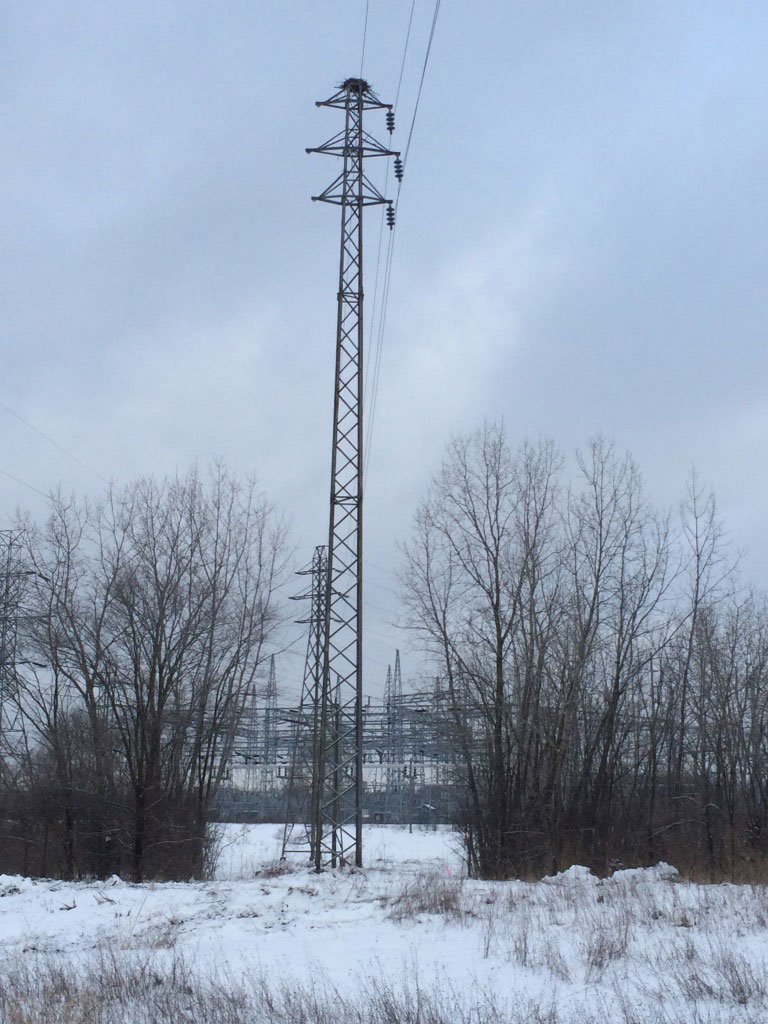
Home is where you make it…but sometimes, you need help with location. That’s the lesson some osprey, a state endangered species, will learn when they return to their nest this spring. AEP crews moved the nest to a safer location in a recent project.
Less than the length of one football field was the additional distance required to separate an osprey nest and the nearby Twin Branch Substation in Michawaka, Indiana. The exact length: 210 feet. Luckily the nest, located on a lattice transmission tower, was unoccupied for the winter but swift action was required before the birds’ return. Construction at the substation, anticipated to begin this summer, could disrupt the endangered species and discourage them from reproducing. An Avian Relocation Specialist Team (ARST) was quickly formed to build an osprey nest-safe platform and transfer the nest from the lattice tower.
ARST was comprised of team members around transmission including Ben Sheets from construction management; Patrick Zillmer, Dan Sommers, Brad Collins and Jake Vite from field services; and Rod Ginter from environmental. The team worked under the guidance of David Hall, AEP Avian Protection Plan coordinator, to develop an osprey nesting platform.
 The concept attaches a two-by-four-foot platform on top of a 70-foot steel pole. The nesting platform is visible from the existing location but meets the required distance from the substation per the state of Indiana. The existing nest was carefully moved to the new platform for the ospreys’ return. To prevent rebuilding on the lattice tower, a protective round cap was placed on top.
The concept attaches a two-by-four-foot platform on top of a 70-foot steel pole. The nesting platform is visible from the existing location but meets the required distance from the substation per the state of Indiana. The existing nest was carefully moved to the new platform for the ospreys’ return. To prevent rebuilding on the lattice tower, a protective round cap was placed on top.
“The ARST team demonstrated the key AEP values of integrity and stewardship. Developed in a short period of time, the knowledge, assistance and enthusiasm the team displayed was remarkable,” stated Rod Ginter, environmental specialist. “The ospreys will have a safer spot to nest that is closer to their summer feeding grounds along the river. The location is free from any climbing nest predators such as raccoons and we can now proceed with our substation upgrades without fear of disrupting their nesting or their nestlings. This project is a true win-win for our substation project and the ospreys – a valuable learning experience for our AEP team.”
Osprey (Pandion haliaetus) are found on the Indiana endangered species list and must be protected. Regulations prohibit construction within 660 feet of an active nest. The nest, located 450 feet from the substation, would require additional permits, agency coordination and possibly delay construction if occupied by the birds this spring. Simply dismantling the existing nest would be a temporary solution, as the osprey would likely rebuild in the same location.